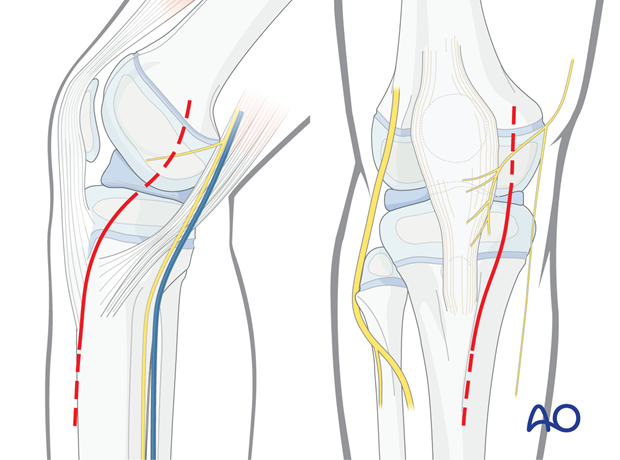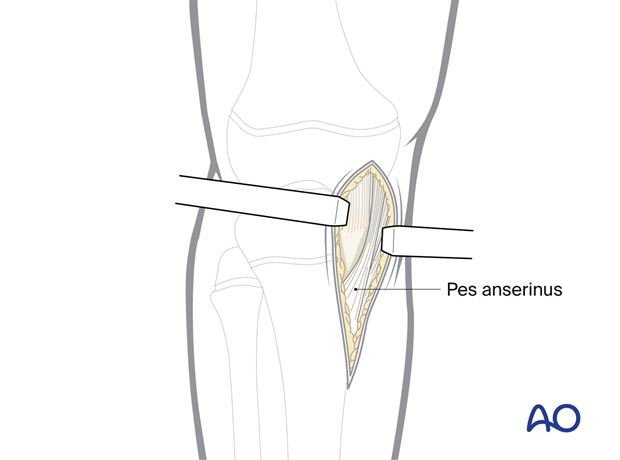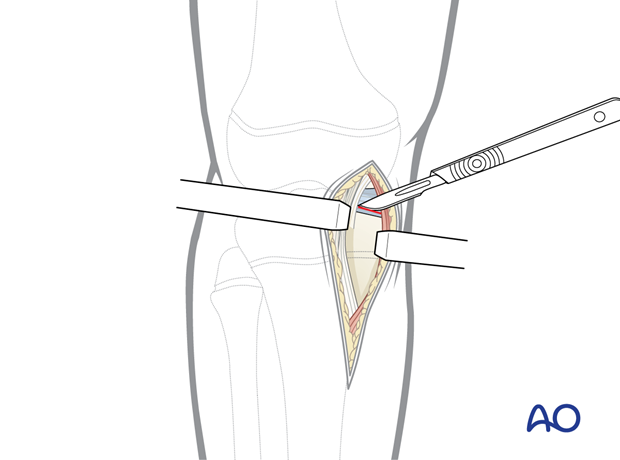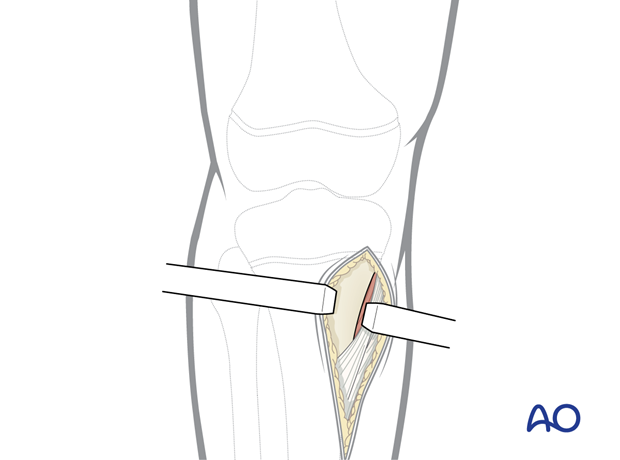Medial parapatellar approach to the proximal tibia
1. General considerations
This approach may be used for fixation of the upper shaft and Salter-Harris II–IV fractures with a large medial component.
The dissection runs between the pes anserinus insertion and the tibial apophysis and provides equivalent exposure to the medial approach. Periosteal stripping and physeal compression should be avoided.
2. Skin incision
With the knee in slight flexion, make a slightly curved incision medial to the patellar tendon running from the medial joint line proximally towards the medial edge of the tibial shaft distally.
The incision can be extended proximally to approach epiphyseal fractures, and distally for metaphyseal fractures.

3. Deep dissection
After opening the fascia, identity and expose the pes anserinus.

Opening the joint
Retract the pes anserinus anteriorly and the gastrocnemius posteriorly and distally.
The joint capsule is opened to expose an intraarticular fracture.
Identify the medial edge of the tibial plateau.

Identify the meniscus and incise the capsule between the meniscus and the edge of the tibial plateau thus gaining access to the knee joint.

Exposure of the metaphysis
Exposure of metaphyseal fractures of the proximal tibia requires deep dissection, starting below the physis and extending distally on the anteromedial part of the proximal tibia.
The pes anserinus can be retracted posteriorly to expose a fracture in this region.

4. Wound closure
Repair the joint capsule with absorbable sutures.
Close the skin and subcutaneous tissues according to surgeon preference.













